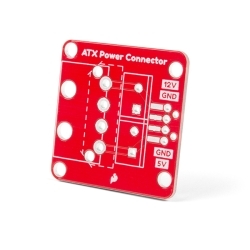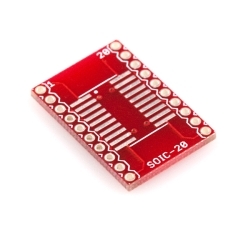SparkFun SOIC to DIP Adapter - 8-Pin
BOB-13655
SparkFun SOIC to DIP Adapter - 8-Pin
SKU: BOB-13655
$3.75
In stock
SKU
BOB-13655
Product Overview
The SparkFun 8-Pin SOIC to DIP Adapter is a small PCB that lets you adapt SOIC packages into a DIP footprint. These tiny boards are useful for modding and upgrading devices that use 8-pin DIP ICs, when the upgraded IC is only available in a SOIC footprint. You can also use these adapters for prototyping by making SOIC packages compatible with solderless breadboards.
This version of the SparkFun SOIC to DIP Adapter adapter comes as a small array of four boards. We did this because if you’re adapting one chip, you are more than likely to adapt another. The PCBs easily snap apart from each other, thanks to two crossing v-scored lines.
Hookup Accessories
Documentation
- Schematic
- Eagle Files
- Hookup Guide
- GitHub (Designs Files)
Customer Reviews

SparkFun SOIC to DIP Adapter - 8-Pin
$3.75
BOB-13655
Stock and Customer Discounts
$3.75 retail price.
Available Discounts
- $3.56 | 10+ units
- $3.38 | 25+ units
- $3.19 | 100+ units








